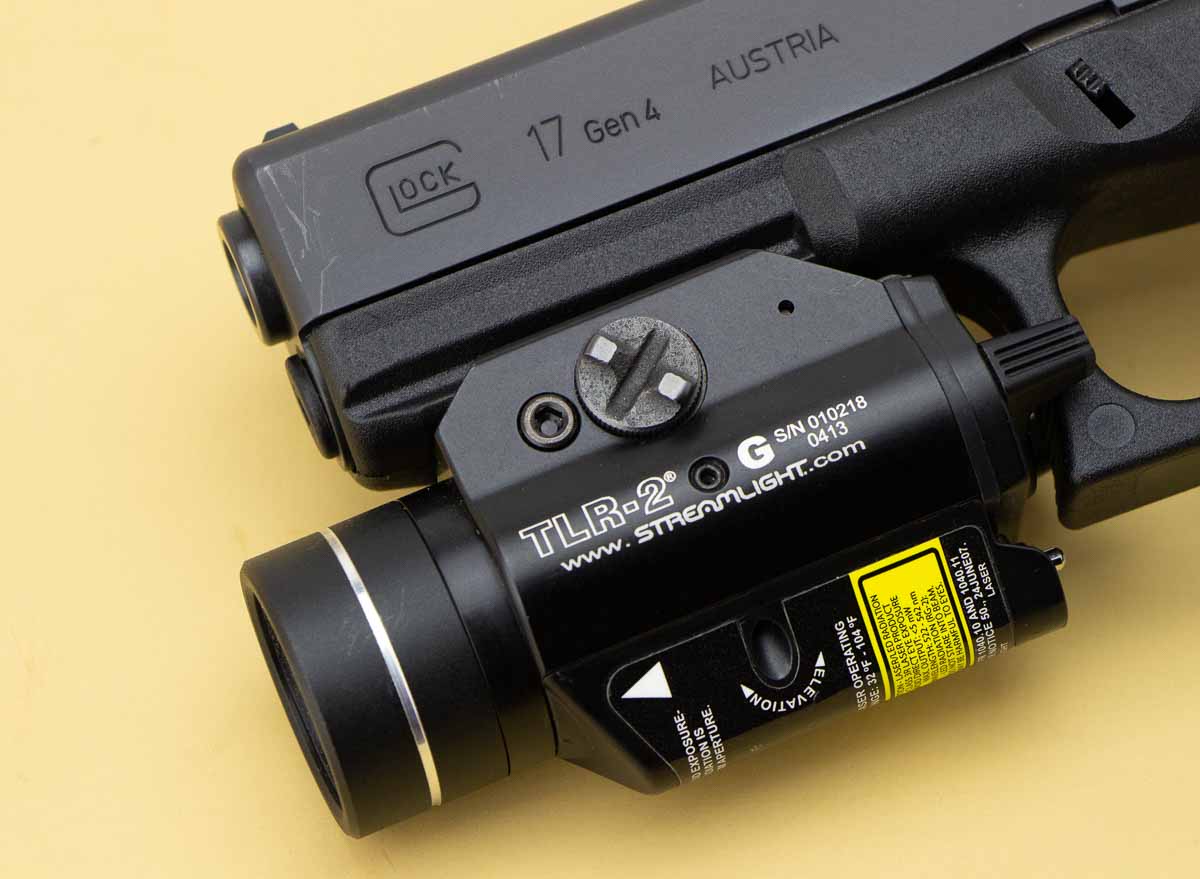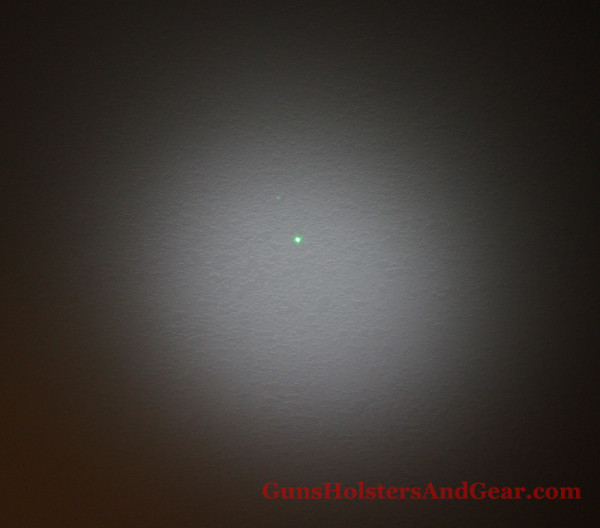Want a powerful white light with a green laser for your firearm? Take a look at this Streamlight TLR-2 G review for details on a very impressive unit that is rugged and doesn’t take up a lot of space.
Originally announced in 2013, the TLR-2 G continues strong today. Looking at the features of this weapon light and you’ll understand why it is as popular today as it was at launch.
TL;DR
– excellent performer with all kinds of pistols and rifles
– extensive testing – 100% reliability
– testing proved accurate specifications
– recommended
– available through affiliate link here
The weapon-mounted flashlight combines a bright white light and a green laser aiming device in one handy unit. This allows a homeowner or police officer the ability to mount a single device on their firearm. Compared with separate light and laser units, this is much more compact and lighter.
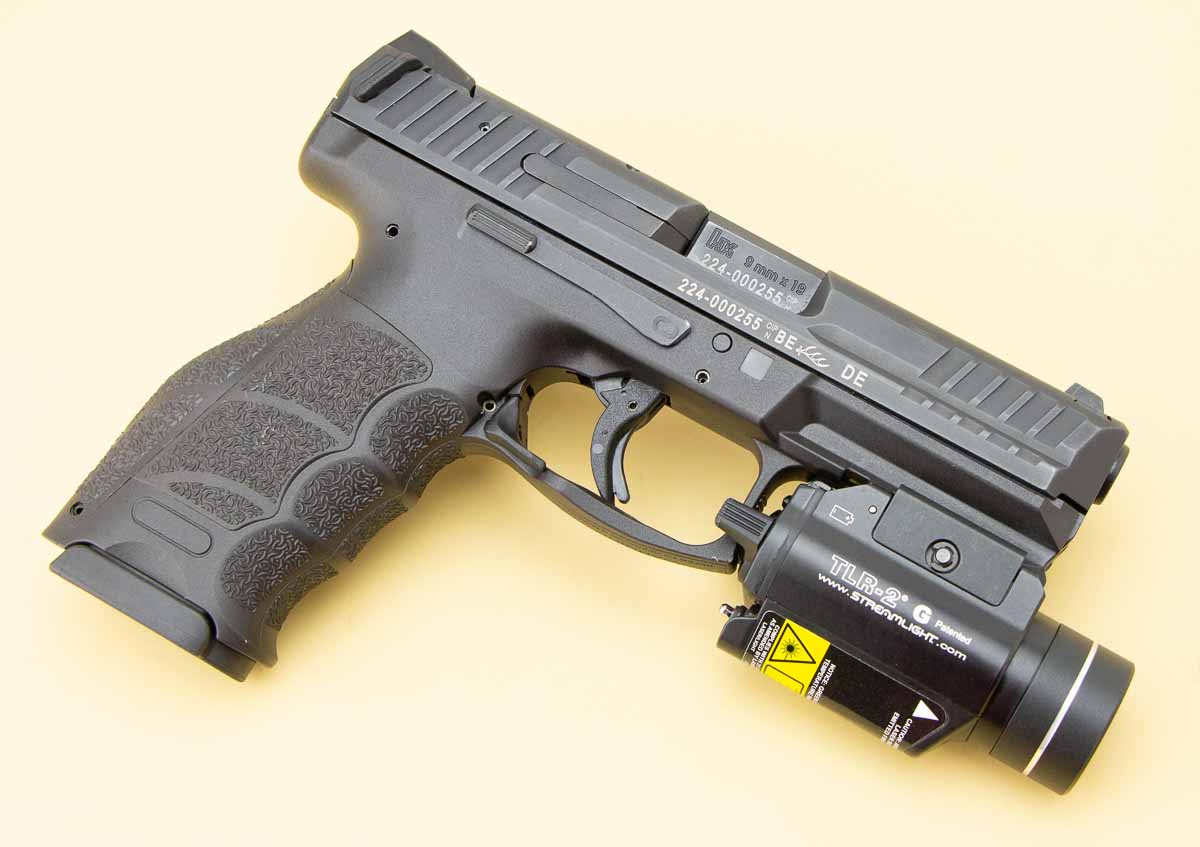
This is also the unit where Streamlight introduced the use of green aiming lasers. Green lasers offer a significant aiming advantage that make it worth the money. Previously, Streamlight only offered units with a red laser. See my Streamlight TLR-2 review for an example.
To see if the TLR-2 G passes muster, I obtained a unit and ran several tests on it for this review.
How Bright Is That Light?
Weapon-mounted lights are nothing new. However, their use is something that is far from universal. Based on my own observations, very few armed citizens have them on their carry gun and probably only half (or less) of police officers have them mounted to their pistols.
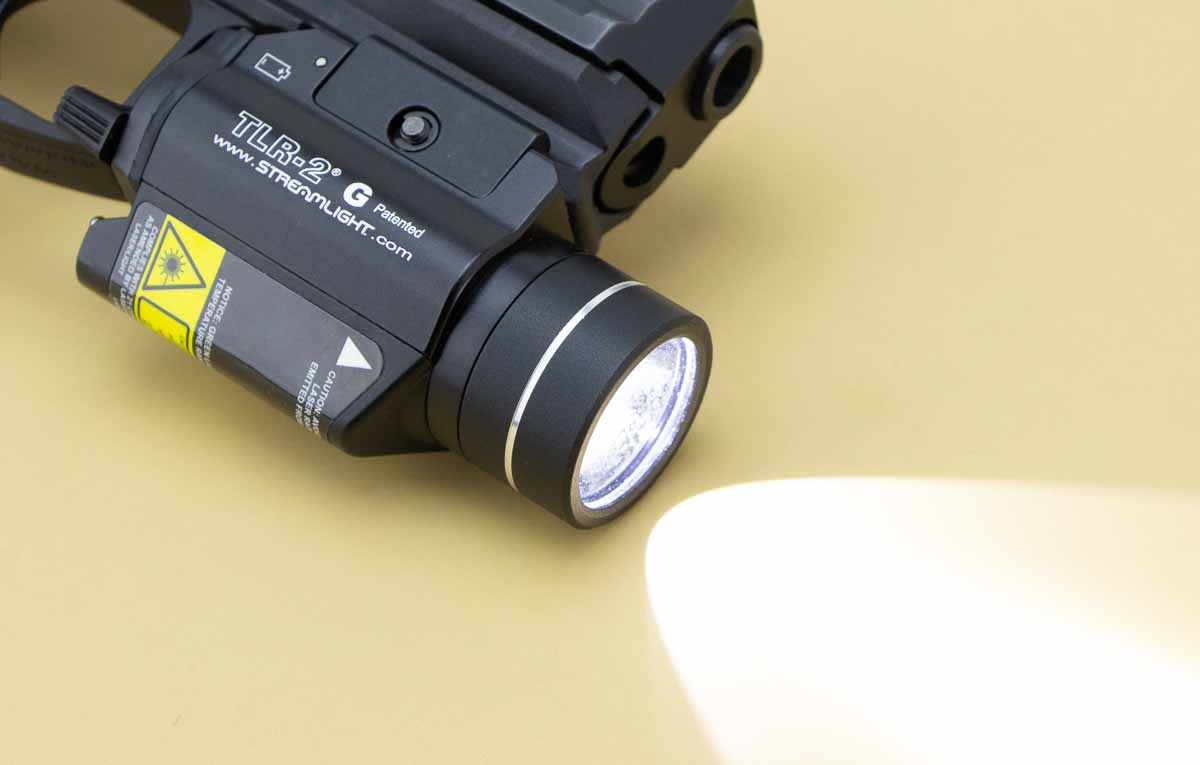
We all know the first rule of a gunfight is to have a gun. But, without being able to properly identify your threat, how do you know that it is time to shoot? And once that decision is made, wouldn’t it be easier to hit your attacker if you could see him or her? Having a bright light mounted on your pistol can make all the difference under stress.
The white light on the Streamlight TLR-2 G is fairly bright: 300 lumens and 12,000 candelas. The 300 lumens are plenty bright to search rooms and identify threats while the 12,000 candelas suggests a suitably concentrated beam for medium-range shots.
Lumens? Candelas? Huh??
If you aren’t already familiar with what lumens and candelas measure, let me give you the quick and dirty. Lumens is a measurement of total light output.
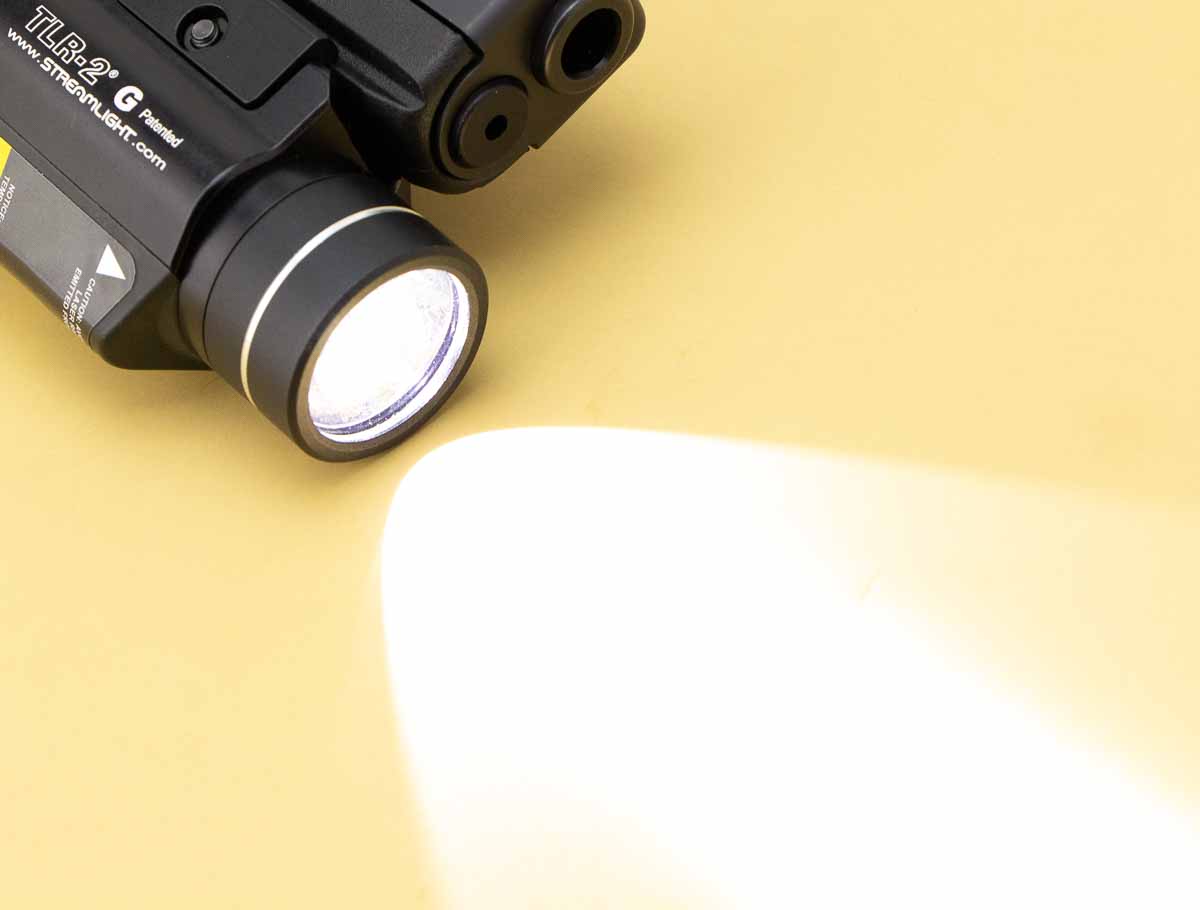
For total output, 300 lumens is pretty good on a tactical light. Other lights claim higher specs – 600, 1,000 or more – but that doesn’t mean 300 isn’t a solid performer. Also, the higher lumen lights can have issues with heat generation and runtime. Lumens are part of the package – not the only spec you should be concerned with.
Candelas, on the other hand, is a measurement of peak beam intensity. The candelas measurement is going to give you an idea of the reach of the light.
In a pair of flashlights with the same total output (lumens), a flashlight with a low candela measurement will give a wider, more even light output. A higher candela measurement suggests the output is a tight, focused beam similar to a spotlight.
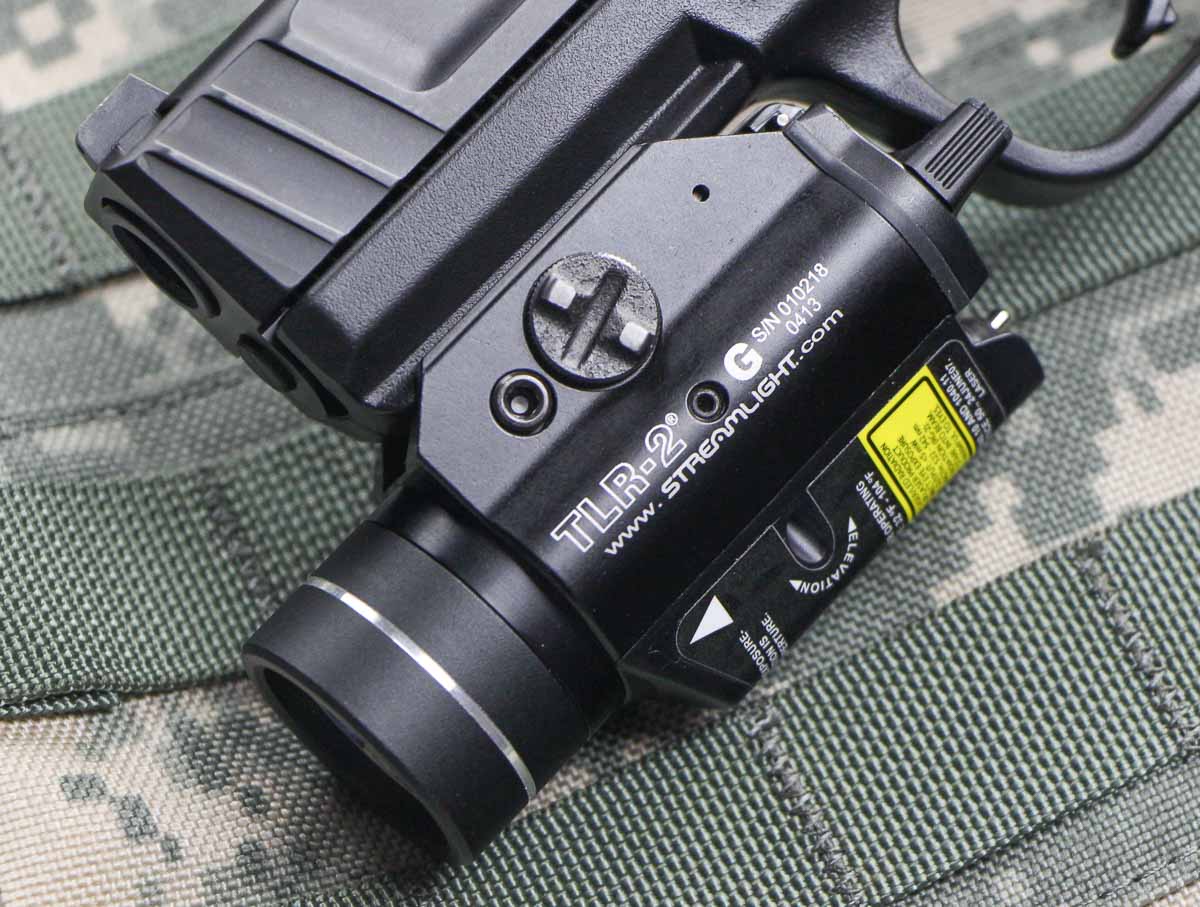
Lower vs. higher candelas is more of a matter of preference as far as I am concerned. For searching rooms, the Streamlight TLR-2 G is perfectly fine at a 12,000-candela rating. It also gives you reasonably reach for longer distances – say across your backyard.
If you need to reach farther, something like the Streamlight TLR-1s HP is a better choice. It is rated at 200 lumens with a 46,000 candelas peak beam intensity. As you might guess, it has a very focused spot beam.
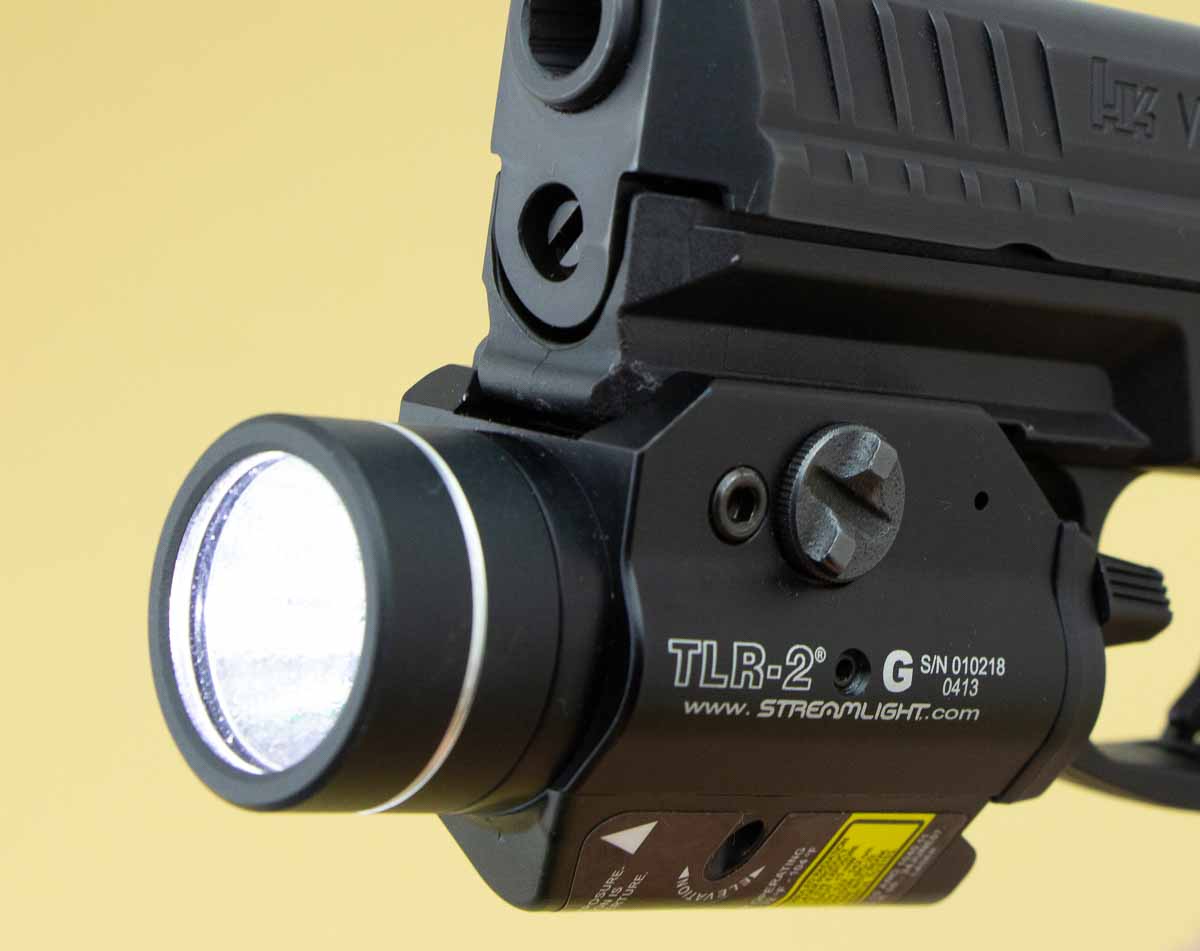
There is no perfect, but Streamlight purposefully designed the reflector to produce this candela output to provide a beam…with optimum peripheral illumination to assist with identifying secondary threats and navigation. Considering most citizens and law enforcement officers would use this light/laser combination at relatively close ranges, such as searching a home for an intruder, Streamlight’s design is likely the best choice.
The Streamlight TLR-2 G uses a C4 LED to produce bright, white light. LEDs are extremely efficient with power use and they tend to be very durable. Streamlight considers this LED to be shock-proof and states the company conducted extensive live-fire testing of the units.
Going Green
Green lasers make a lot of sense to me. Compared to red lasers, they are much more visible in both bright light and low light conditions. The human eye is much more sensitive to the color green than red, so for the same power output, the eye perceives the green laser to be brighter.
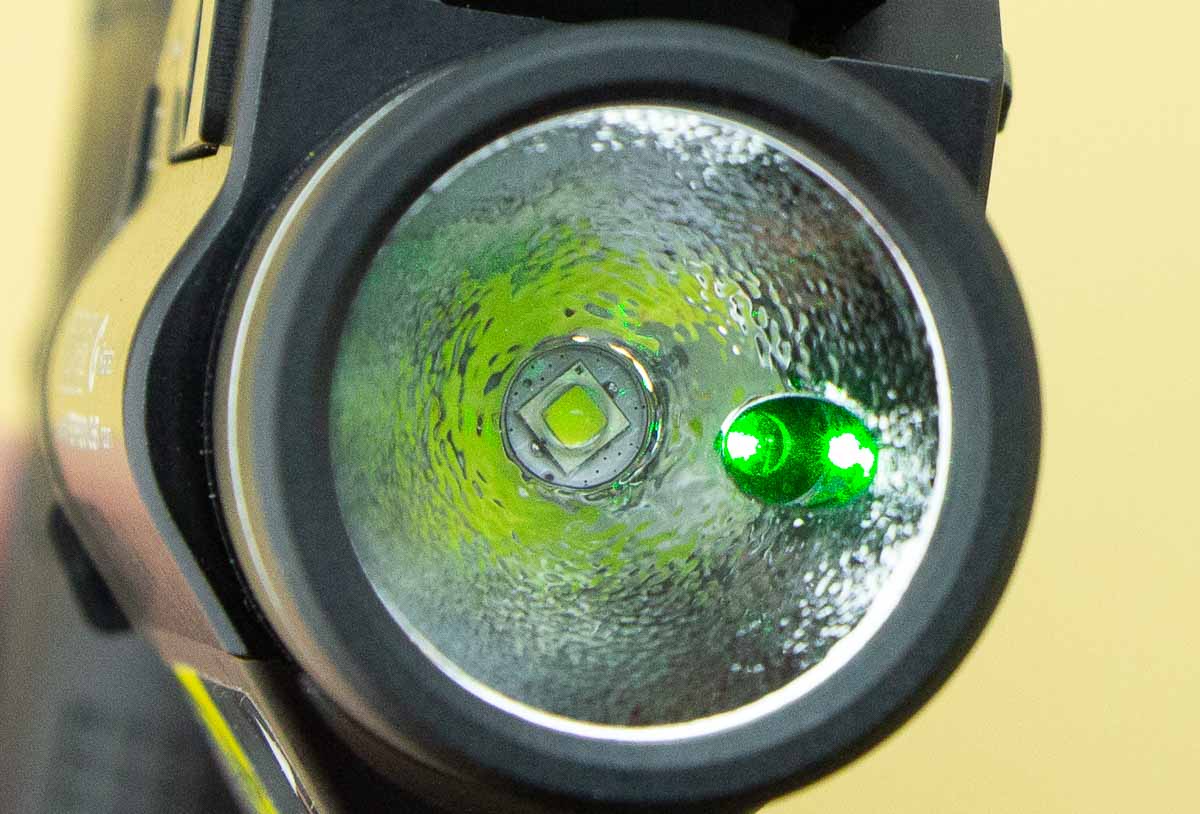
The downside to green lasers is they are harder to produce than red lasers. Generally, this downside translates to higher costs for the consumer. While the cost of green lasers is coming down, they are not as cheap as red lasers…yet. MSRP on this unit is $550, but don’t freak – you can buy these for less than $300 online.
The laser unit emits the beam from inside the flashlight portion of the unit. On the left side of the TLR-2 G reflector is a small port out of which the laser beam shoots. This reduces the overall height of the unit compared to older models that simply stacked a laser on the bottom of the light housing.
Moving the laser closer to the barrel also reduces inaccuracies in aiming. Much like a scope, the taller the unit (the farther the aiming device is from the bore) the greater the likelihood of inaccuracies.
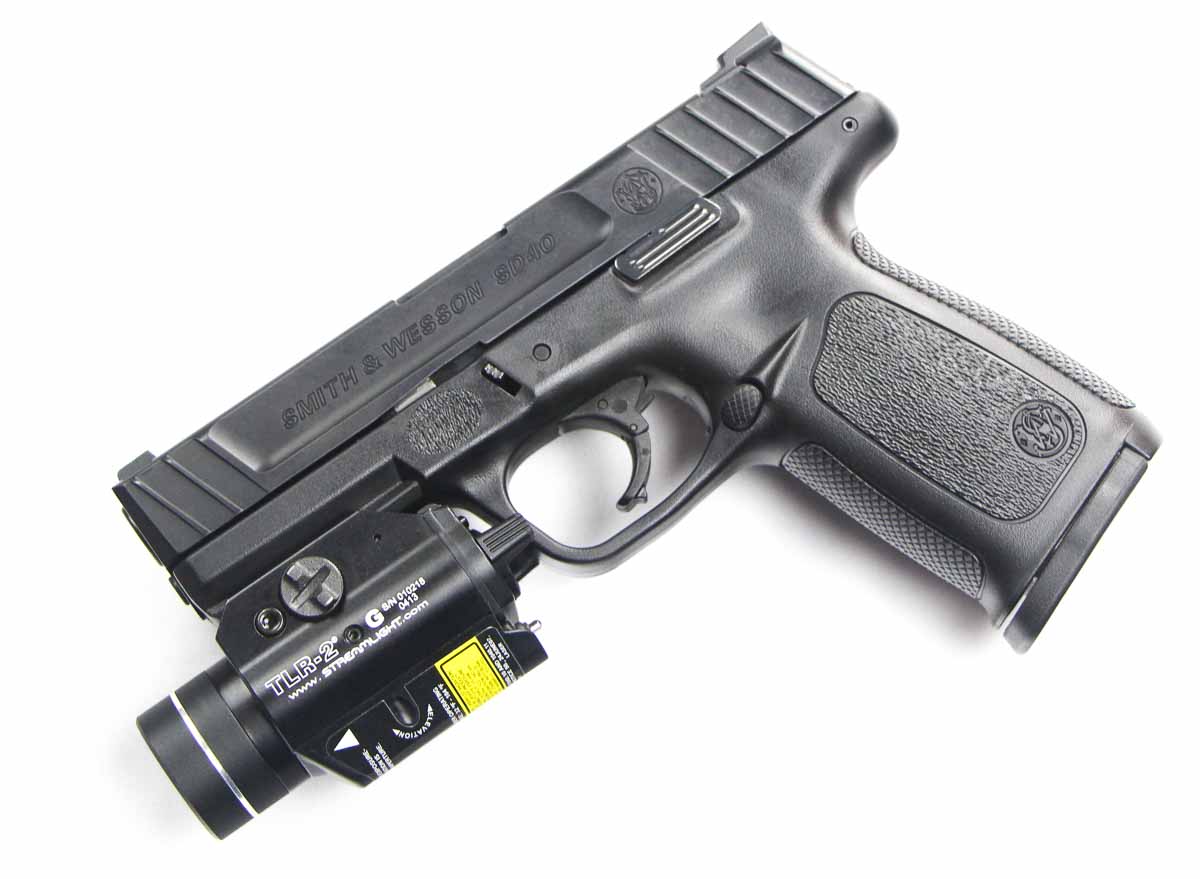
Technically, at only one distance will the bullet and laser beam hit the target in exactly the same spot. The spot is whatever distance for which you sight the laser. Often this will be in the 7 – 15 yard range. Distances that are closer or farther away will place the bullet above or below the laser’s beam. The closer the beam is to the gun’s bore, the less variance the shooter will see in the bullet placement vs. laser beam placement.
Do Cold and Green Mix?
Streamlight states the green laser has an operating range of 32-104 degrees Fahrenheit. Temperatures below 32 degrees is not much of a concern for me here in central Florida, but for a uniformed cop or security guard working in the northern US during the winter, this could be a significant concern.
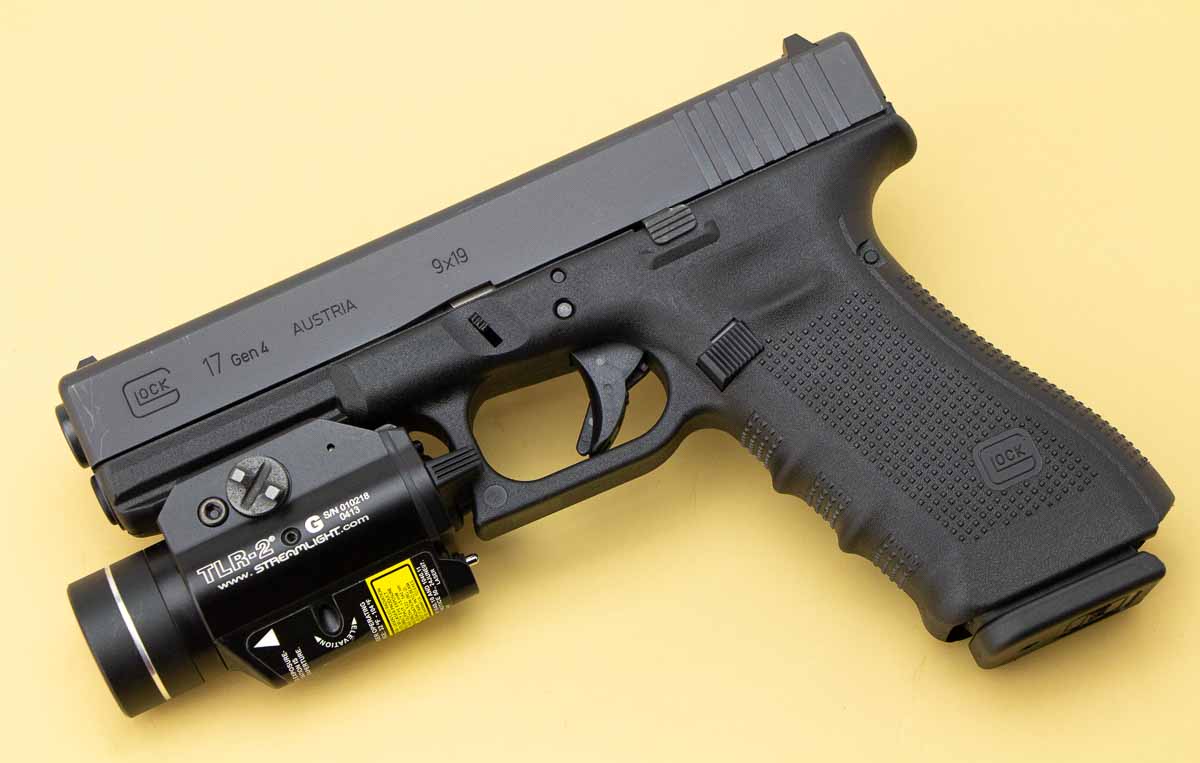
Right now, lows in my area only reach into the 60s at night. So, outdoor testing with this unit wouldn’t prove much. Instead, I mounted the TLR-2 G on my Smith & Wesson M&P9 and stuck it in my deep freezer that is set at 0 degrees Fahrenheit.
After 30 minutes, I pulled the gun out, and sure enough, the laser was pretty darn weak. It was still visible, but barely so. As the gun warmed up, the laser’s brightness returned fairly quickly. In less than five minutes in a room temperature of 78 degrees, the laser appeared to be functioning at full brightness again.
With a little research, I was able to determine that green lasers are much more temperature-sensitive than red lasers due to the effect extreme cold and heat have on the diode producing the laser beam. Temperatures can also affect red lasers, but generally at much colder or hotter temps than green lasers.
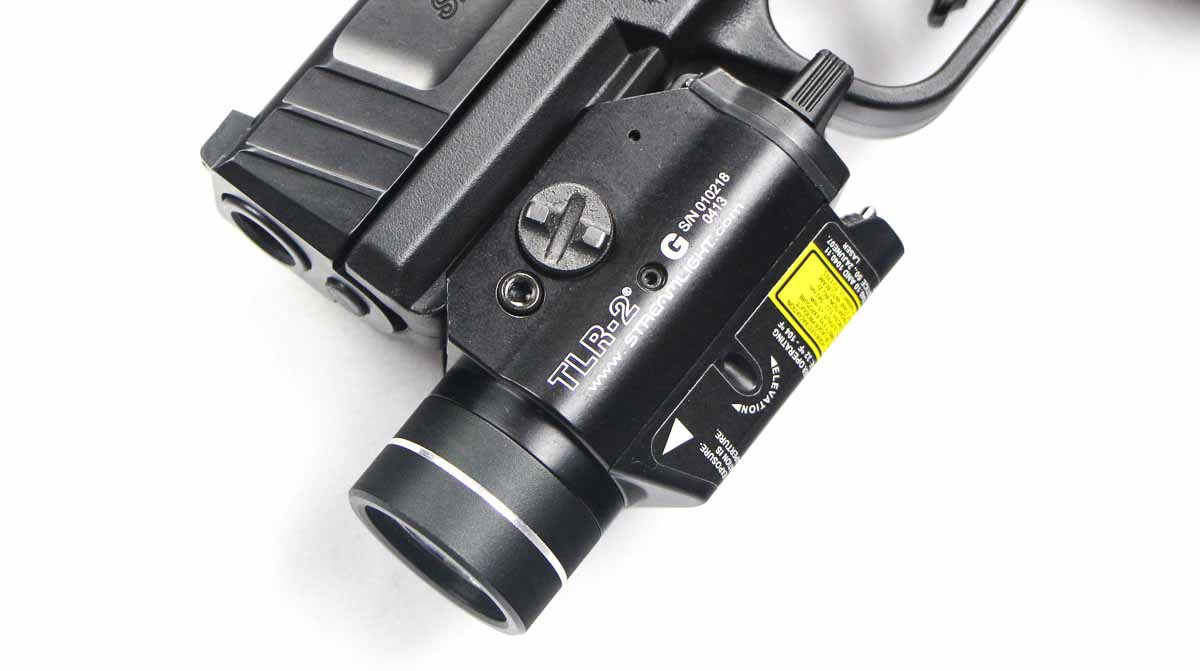
It would be my guess that anyone who is continuously outside in sub-freezing temperatures for more than 30 minutes might not get the green laser to function properly.
However, for a police officer who is in-and-out of a patrol car, it is not as likely to be an issue. For the homeowner who steps into his backyard to check a strange noise – it should be no problem at all.
Fit and Function
Fitting the Streamlight to your pistol’s accessory rail is a simple process. It will mount to any Glock or Picatinny rail, which will cover the majority of accessory rails out there. The TLR-2 G will also mount onto the rails of the Beretta 90Two and the Smith & Wesson 99 and TSW.
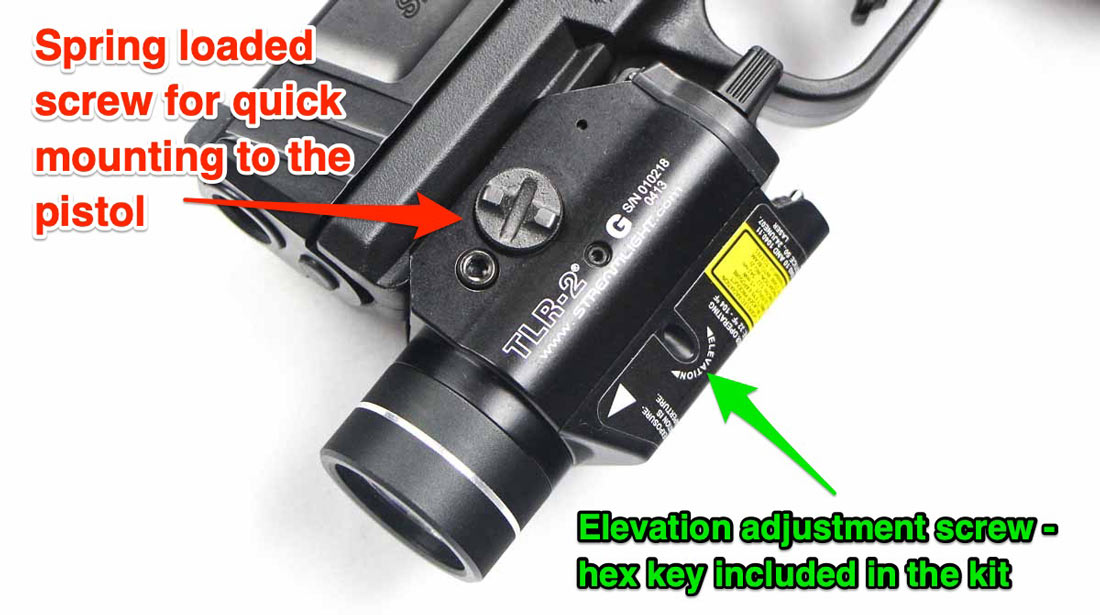
There are internal keys that are designed for each of the above-mentioned rails All of the keys come with the unit and just drop into the unit. Once in place, use the included Allen wrench to tighten the key down.
My TLR-2 G came with the Glock key installed. Since I was going to initially test this unit on an M&P, I swapped the key out to the Picatinny model. It took less than two minutes to accomplish.
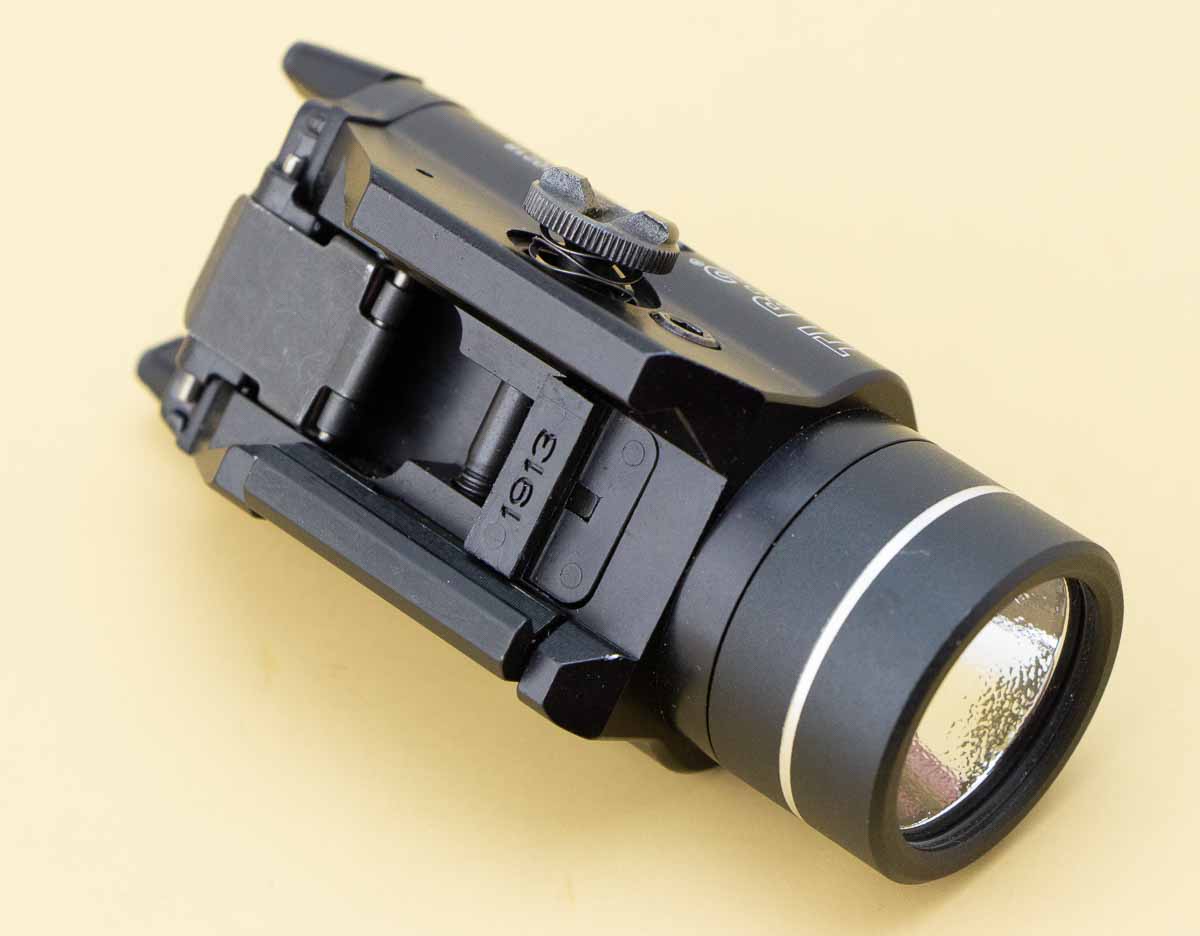
When you have the right key in place, all you do is press in on the spring-tensioned screw on the side of the TLR-2G. This pushes the mount wider so you can position it onto the accessory rail. When in place, merely let go of the screw and the unit is now attached to the rail. Hand-tighten the screw, and then use a coin to give the screw an extra quarter turn to lock it into place.
The system is exceptionally easy and all parts/tools are included (except the coin.)
Operating the TLR-2 G
The light and/or laser are activated by a large switch on the back of the unit. The switch is easily accessed and operated by the trigger finger of either hand.
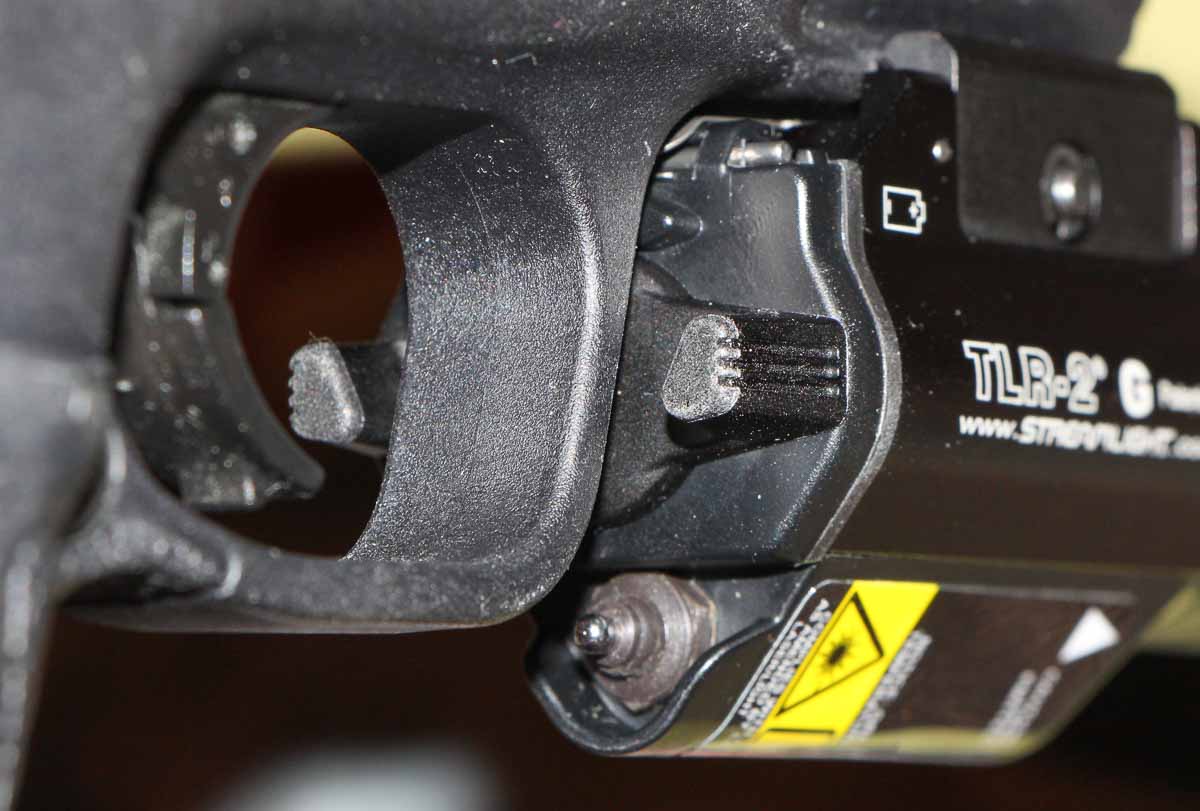
Pressing down on the right side (or up on the left) will turn the light and/or laser on for a constant beam. Pressing down on the left (or up on the right side) will give you a momentary white light and/or laser beam. Double pressing down on the left (or up on the right) will strobe the beams.
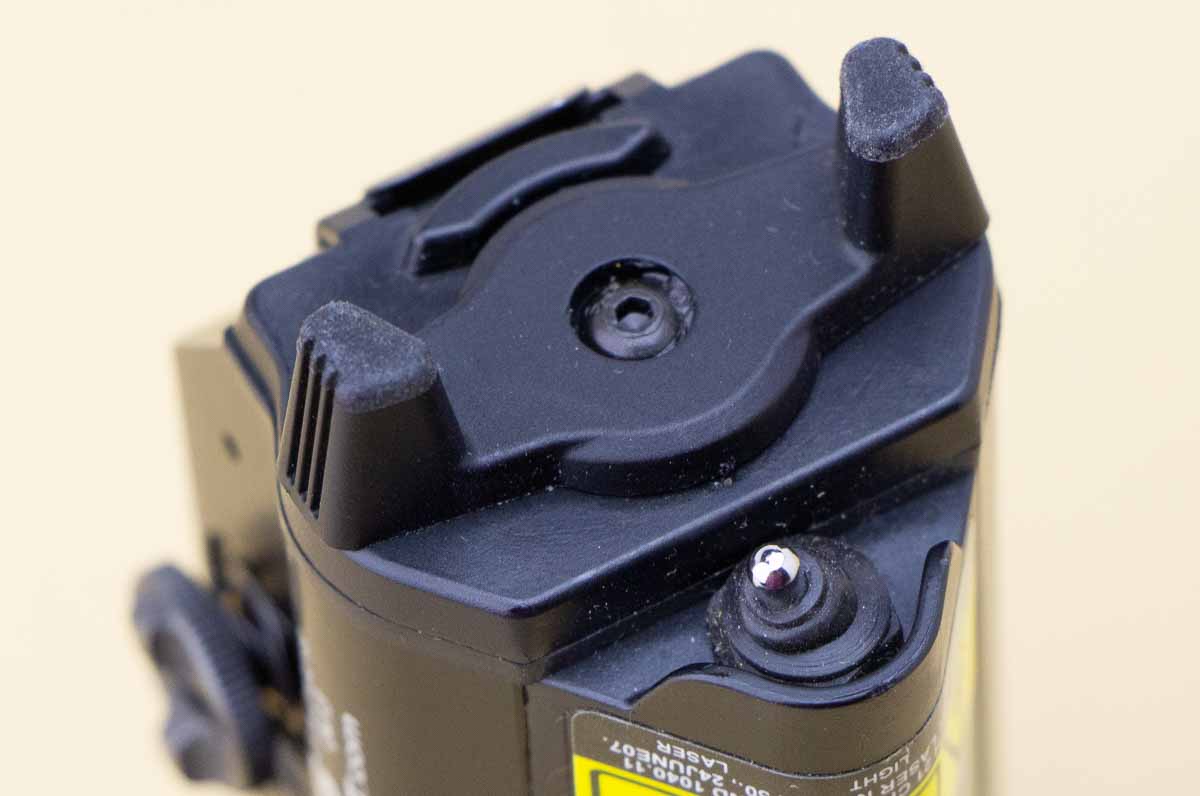
A smaller switch at the rear of the unit, and under the trigger guard area, allows the shooter to pick between three modes: laser only, light only, or laser and light both. Accessing this switch was a conscious effort, and it is extremely unlikely that anyone would accidentally change the setting on this switch.
Runtime
Runtime for the current TLR-2 G units is listed at 2.5 hours with both the white light and green laser-activated. That’s a darn good runtime.
My review unit was one of the original weapon lights. It uses the original LED and circuitry that was rated at 200 lumens and a 1.5-hour runtime. If you operated the laser and light simultaneously, the runtime dropped to 1.25 hours.
In actually testing I found the original TLR-2 G had a light only runtime of more than 2 hours to reach the industry-standard 10% output level.
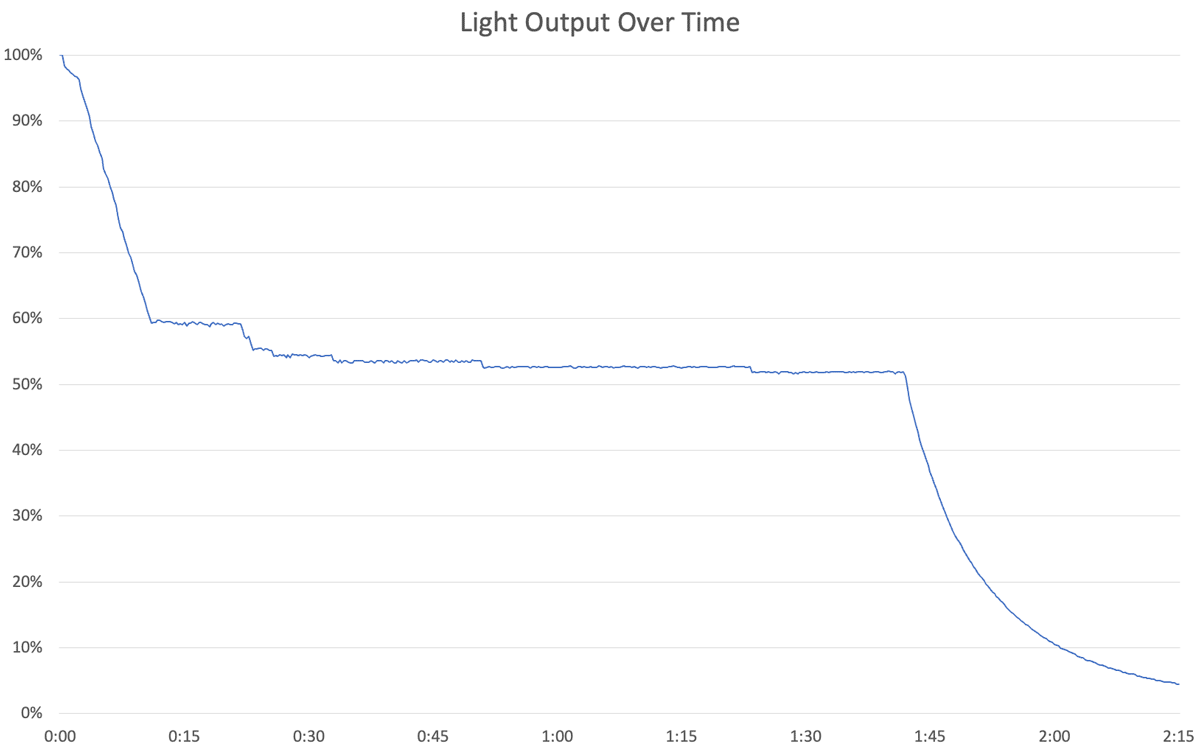
The light impressively held 50+% for more than 1.5 hours – nearly 1.75 hours. It would seem that Streamlight is definitely following the FL-1 flashlight standard in its testing and reporting.
With the latest hardware, Streamlight rates the new 300 lumen lights with a runtime of 2.5 hours. I’m confident the new TLR-2 G lights handle this with ease.
Specifications
Here are the current specs for the TLR-2 G:
| Total Light Output | 300 lumens |
| Peak Beam Intensity | 12,000 candelas |
| Beam Distance | 219 meters |
| Runtime | 2.5 hours |
| Battery | one CR123A |
| Length | 3.39″ |
| Weight | 4.58 oz |
| Body Material | 6000-series aluminum |
| MSRP | $550 |
Range Evaluation
For my first experience with the TLR-2 G, I test drove it on my 9mm M&P at an outdoor range. I wanted to see how visible the green laser was going to be in daylight conditions. The good news is it was very visible. Even under the bright Florida sunshine, I was able to pick up the green dot instantly.
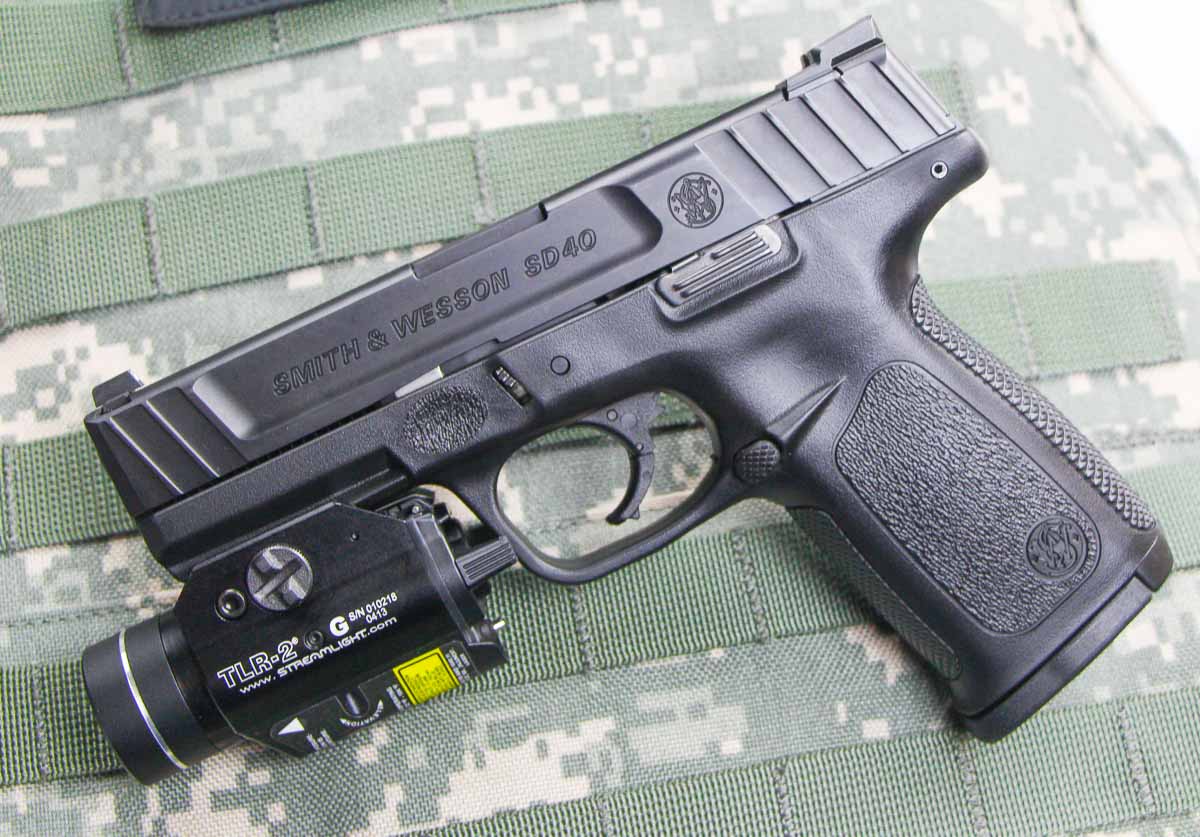
The unit’s aiming point was very low and needed significant adjustment to bring it on target at handgun distances. Fortunately, this was very easy. Streamlight includes a small hex wrench that you can use to adjust the beam’s elevation. After a few turns of the wrench, I brought the beam on target and perfectly matching the gun’s iron sights at seven yards.
The weapon light does add some weight to the end of the pistol. If you were holding someone at gunpoint for a long period of time, every ounce starts to feel like a pound when the adrenaline starts to wear off and you are waiting for help. But, the light is still less than five ounces, which isn’t bad. A benefit of the extra weight is less felt recoil and muzzle flip when shooting.
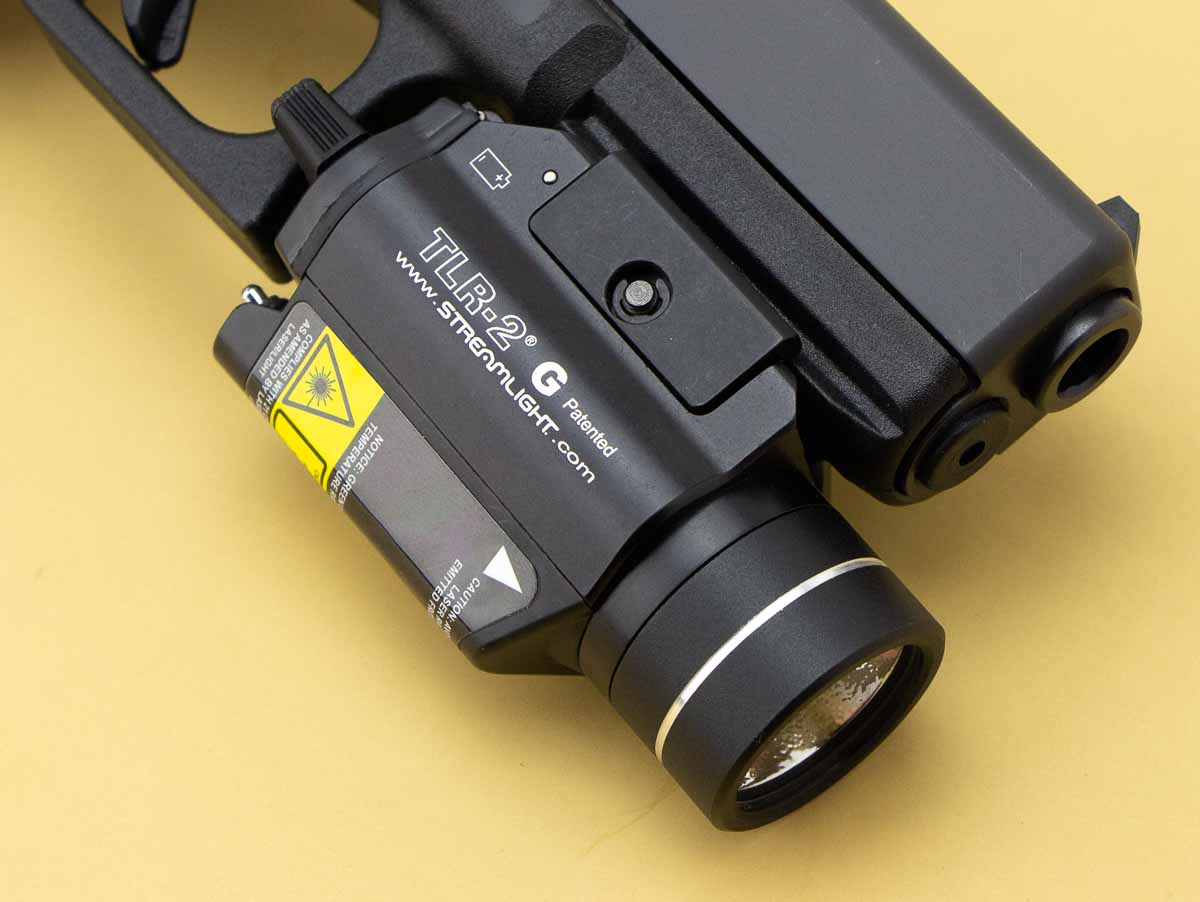
During my initial range evaluation, I shot 300 rounds of standard, +P and +P+ pressure ammunition through the gun. At the end of the shooting, the laser was still on target and the unit was still firmly attached to the pistol. The light also continued to work perfectly.
That’s a solid start.
Since that initial trip, I’ve used the weapon light on a multitude of firearms including the:
- Glock 17,
- H&K VP9,
- Diamondback AM2,
- IWI Galil ACE,
- Girsan MC1911 CT
- Mossberg 464 rifle, and the
- Springfield Armory XD9.
The light has taken. a pounding from 9mm, .45 ACP, 5.56 NATO and .30-30 Win rounds – all without a hiccup.
Videos
I shot a couple of videos to give you a better idea of the TLR-2G’s capabilities. Here they are:
And then a follow up showing the green laser is full daylight conditions:
Streamlight TLR-2 G Review Summary
I like this unit. I’ve had a lot of good luck with Streamlight products, and the TLR-2 G meets all of my expectations.
There are two drawbacks to the green laser in this unit: the price and the degradation of performance in sub-freezing temps. The price is inescapable: all companies offering green lasers face the same issues with cost. Streamlight is generally pretty good about pricing, and this unit will be competitive with anything similar on the market.
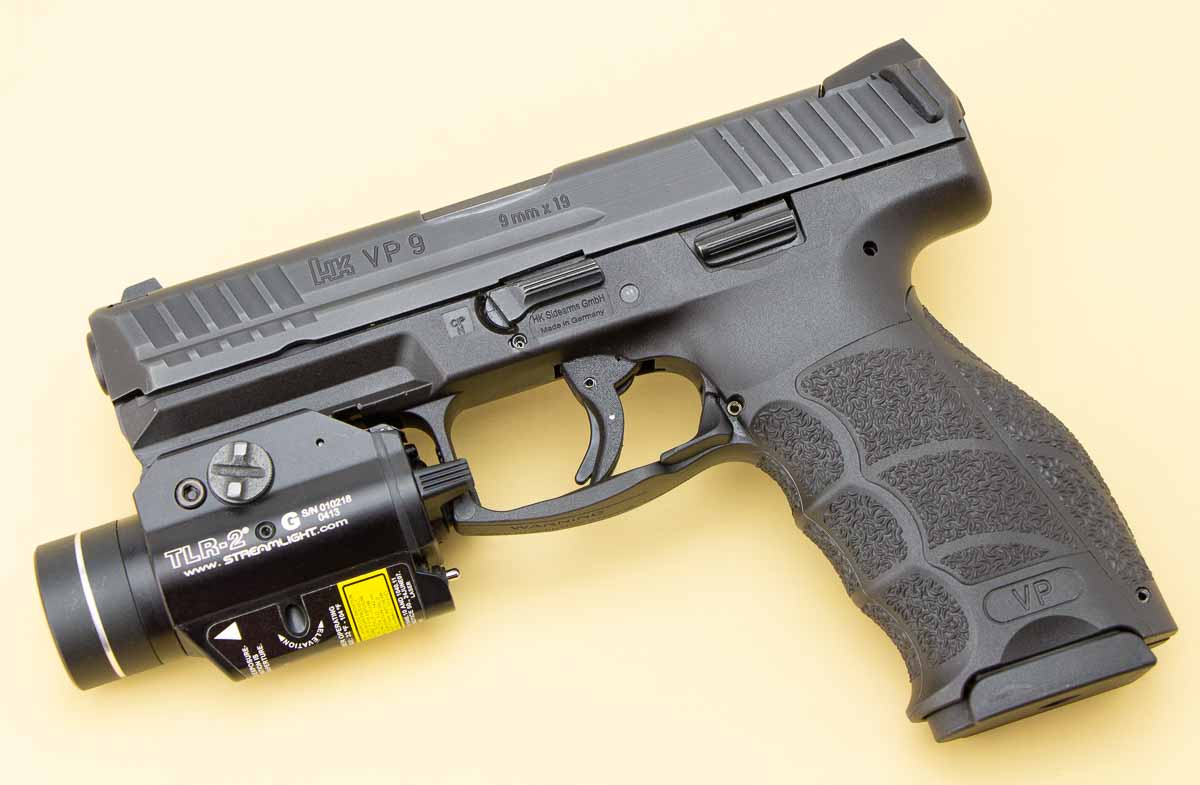
Sub-freezing temps are a concern depending on where you expect to use this light and laser unit. If you are working as a state trooper in Alaska, this is probably not the right unit for you. On the other hand, if you are a deputy in south Florida, the Streamlight TLR-2 G is definitely worth your consideration. A homeowner almost anywhere will probably like this unit.
So, unless you are working in extreme temps, this is a great light and laser unit and worthy of your examination. Click here to get the Streamlight TLR-2 G from Amazon.
Last Update: August 6, 2021
Disclosure
GunsHolstersAndGear.com is a for-profit website. I do not charge readers a dime to access the information I provide.
Some of the links on this page and site are affiliate links to companies like Amazon and Palmetto State Armory. These links take you to the products mentioned in the article. Should you decide to purchase something from one of those companies, I make a small commission.
The links do not change your purchase price. I do not get to see what any individual purchases.
